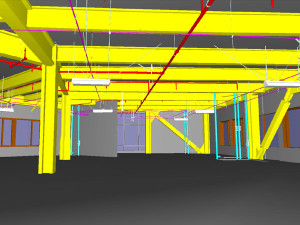 3D printing is a relatively new and exciting technology. Finding applications in fields ranging from manufacturing to medicine; 3D printing allows you to produce functional components using additive manufacturing. 3D printing is here to stay because it reduces material wastage, saves time, and improves overall efficiency.
3D printing is a relatively new and exciting technology. Finding applications in fields ranging from manufacturing to medicine; 3D printing allows you to produce functional components using additive manufacturing. 3D printing is here to stay because it reduces material wastage, saves time, and improves overall efficiency.
Just as there are several applications of 3D printing, so also is there a wide range of materials used. Different materials have unique properties (strengths and weaknesses) that make them best suited for different applications.
In this article, we examine some of the most common materials used, their ideal usage, and their drawbacks.
Plastic
Plastic is the most common raw material for 3D printing in use today. From 3D-printed toys to household features (like utensils and vases), plastics have a great appeal – thanks to their malleability, firmness, and smoothness. What’s more, plastic has a wide range of colors and can be easily used to make irregular shapes.
There are different types of plastics used in 3D printing. Some of which include:
Nylon (also known as polyamide)
Nylon is a synthetic thermoplastic noted for its flexibility, low friction, durability, and corrosion resistance. It is well suited for creating complex geometries. It is also inexpensive and tough.
ABS (Acrylonitrile Butadiene Styrene)
A common 3D printer filament, ABS is the preferred material for personal or household 3D printing. It is accessible and cheap, with a longer shelf life than nylon. It is mainly used for making high-quality prototypes.
PLA (Polylactic Acid)
Made from renewable sources like sugarcane and cornstarch, PLA is the “green plastic.” Due to its low warping, it is easy to print. Because it is easy to work with, it is the preferred material for use in children’s schools.
One major drawback of plastic as a 3D printing material is how it reacts to intense heat. Heat can cause deformation, which distorts the precise shape of the object.
Resin
According to Wikipedia, the resin is a solid or highly viscous substance of plant or synthetic origin that is typically convertible into polymers. Resins have many special properties that make them great for 3D printing. Some examples include low shrinkage and high chemical resistance.
Resins can be divided into three main categories:
High-detail resin
High-detail resin is a photopolymer material cured by UV light after it is jetted. When it comes to creating 3D models involving intricate detail, the high-detail resin is the go-to.
Paintable resin
Ideal for making smooth 3D surfaces. Figurines – with rendered facial detail – are typically made from paintable resin.
Transparent resin
This is a transparent material with a slight blue tinge. It is constructed from a liquid resin that is hardened by a laser. It is mainly used to embed or encase almost any object in crystal clear plastic.
Resin, however, comes with some drawbacks. Asides from being expensive, it also has high photo-reactivity, so it has to be stored properly. It can also undergo premature polymerization when exposed to heat.
Metals
Metals are also a common material used in 3D printing. It finds massive application in the aviation industry, where it is used to make air-travel equipment promptly and efficiently. Jewelry makers also use 3D printing to produced engraved bracelets, necklaces, and other fashion items. These metals use the Direct Metal Laser Sintering (DMLS) or Selective Laser Melting (SLM).
Some of the common metals used include:
Gold and silver
These filaments are usually processed in powdered form. They find great application in the jewelry industry due to their high value. This precious metal is, however, expensive and relatively difficult to work with.
Stainless steel
Stainless is noted for its strength, hardness, high ductility, and corrosion resistance. However, the printing time for stainless steel is much longer. It is also more expensive to print with it.
Titanium
Most noted for its lightness, high strength, and corrosion resistance, it is heavily used in high-tech fields like aviation and space exploration. Note that printing with titanium is very expensive.
Carbon Fiber
Carbon fiber 3D printing filament consists of tiny carbon fibers infused into the base material. Thanks to carbon fiber’s strength, stiffness, and dimensional stability, when added to the base material, it improves its performance.
Composites like carbon fiber are used in 3D printers as top-coat over plastic material, resulting in more durable and rigid objects.
Ceramic
One of the newcomers to 3D printing, ceramic, is noted for its durability (which is better than that of metal and plastic) because it can withstand insane heat and pressure without warping or breaking. It is also not susceptible to corrosion and acidic substances. This material is typically used in SLA (Stereolithography), Binder Jetting technology, and DLP (Digital Light Processing).
Wrap Up
We’ve explored just some of the materials used in 3D printing. Other materials that are of notable mention include:
PET/PETG
HIPS (High Impact Polystyrene)
Graphite and Graphene
Nitinol
Paper
Contact us HERE today for more details.








